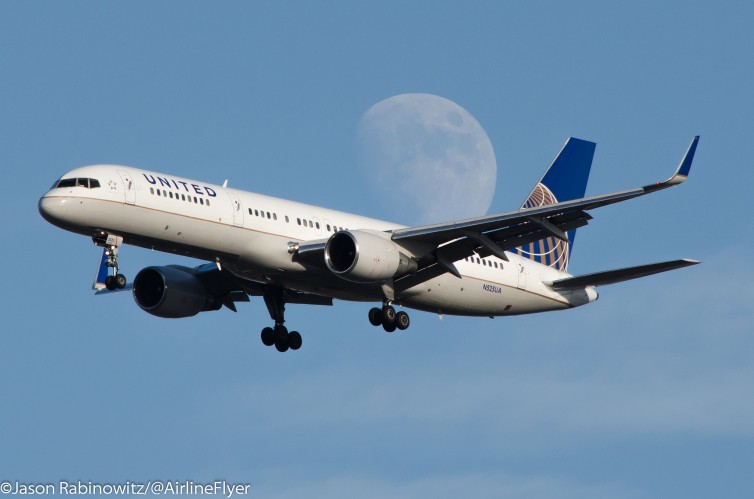
To the moon! Or maybe just to Jersey.
Let’s start out with the obvious: it’s been a rough few years for United Airlines. Amidst a choppy merger, a CEO ouster scandal (then the new replacement CEO having health issues), and an awful economic climate for the industry during most of the decade, the Chicago-based airline’s public perception took a big hit. It has become pretty clear that major change is needed to win over the hearts and minds of the American flying public.
Over the past year, United has unveiled a number of updates, including the return of free snacks in economy, beer and wine in long-haul international economy, the continued rollout of WiFi, increased direct-to-device streaming entertainment, refreshed menus in premium cabins, and improved United Clubs. Some updates have gone into effect already, while others will be rolled out gradually during this year.
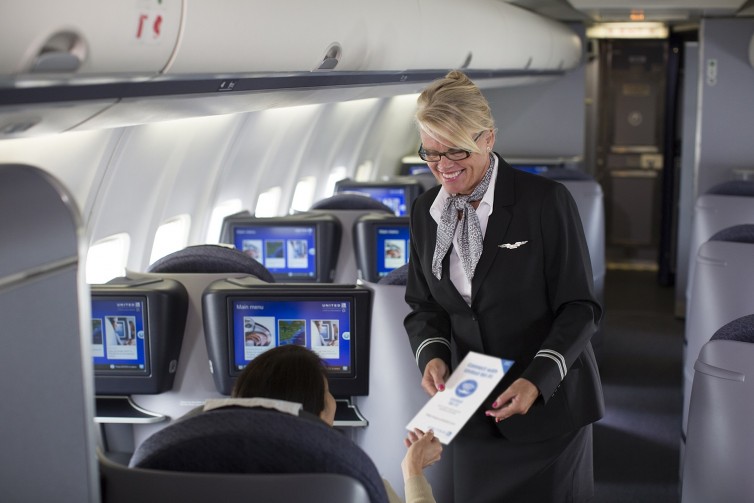
p.s. BusinessFirst – Photo: United
One major structural change in 2015 was United’s withdrawal from JFK Airport, which had previously served as the New York terminus of the flagship domestic Premier Service (p.s.) routes from San Francisco and Los Angeles. As of October 2014, those flights now land at United’s massive and ever-expanding hub at Newark Liberty International (EWR). On the other coast, United has also been investing in its Terminal 3 hub at SFO.
Other airlines have been upping their transcontinental game, with American flying three-class A321Ts, JetBlue expanding its ever-popular Mint service, and Delta offering its Delta One long-haul product between JFK and LAX/SFO.
Over the course of a few trips between San Francisco and New York on the p.s. route, I had a great chance to test drive some of the latest changes at United. Read on as I share some of my insights from putting the new United through its paces.
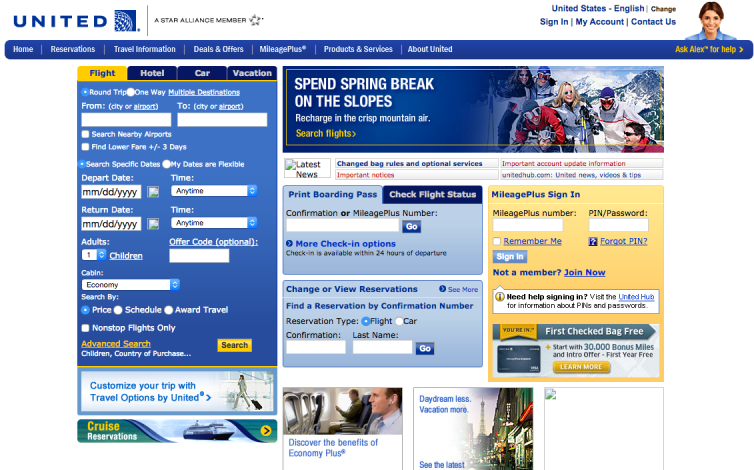
The old website – Image: United
UNITED’S WEBSITE
The Old: Glum. Blah. Functional, but uninspired. United’s old website did what I needed it to, but felt a little dated by the end of its life.
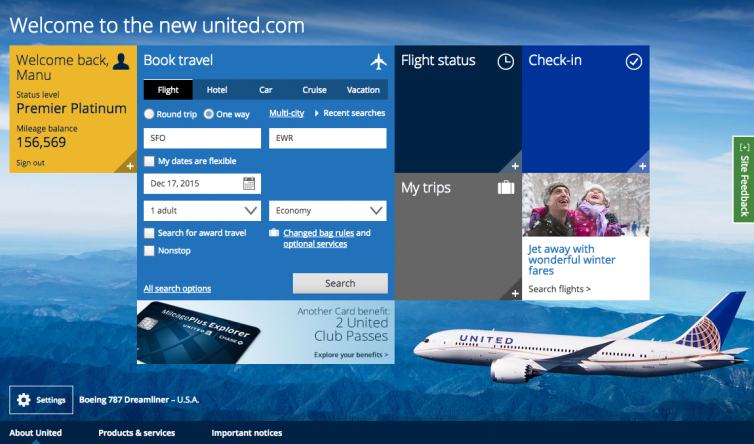
The new (and improved) United website – Image: United
The New: Sleek. Dynamic. You can even customize the background image with an aircraft of your choice. Useful new features include a better view for flight search results, searchability by upgrade type, a list of your recent searches, and the ability to preview seat selection on the search results page. The latter feature can help you find flights with more free space, especially helpful if you’re fishing for upgrades.
While the site itself is shiny, the rollout had some occasional hiccups. Add on the crash of the entire booking system that occurred last summer, and you can see why United’s e-presence had a rough 2015.
The Verdict: Despite losing some points for execution, the updated United website represents a worthy update. The new mobile app also deserves a positive mention.
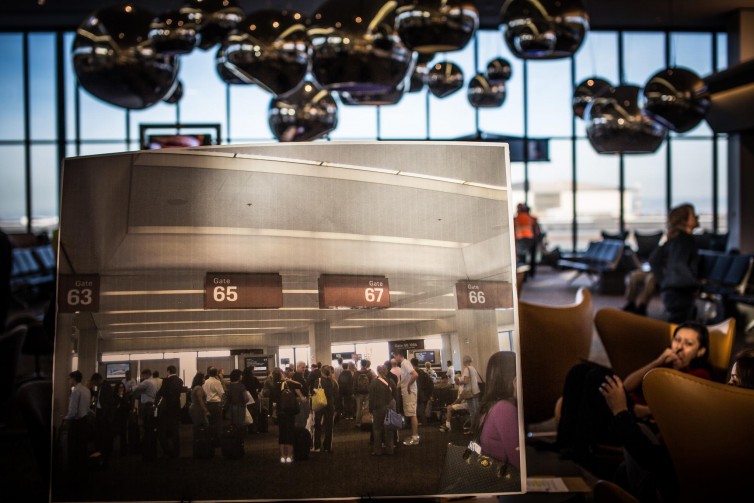
Photo in a photo: the old look versus the new – Photo: SFO
UNITED P.S. ’“ THE CONCOURSE AT SFO TERMINAL 3
The Old: Pre-2014, United’s main domestic terminal at SFO rocked a concrete-heavy 1970s look that ’“ while not as bad as some other terminals in the US ’“ was still in need of a makeover.
The New: Let there be light! United raised the roof (literally) with the first phase of the major Terminal 3 renovation at Concourse E. Opening at the end of 2013, it featured plenty of sunlight, more varied seating options, updated dining, and some art installations.
- Welcoming lighting – Photo: SFO
- New gate and terminal look – Photo: SFO
- Open look and feel – Photo: SFO
In November of 2015, United unveiled its renovated Terminal 3 East Concourse (the central part of the terminal), featuring open thoroughfares, massive windows, a few new gates, new dining options, and a security checkpoint big enough to handle crowds in the TSA era.
The Verdict: No mixed reviews here. The updates to Terminal 3 are fantastic.
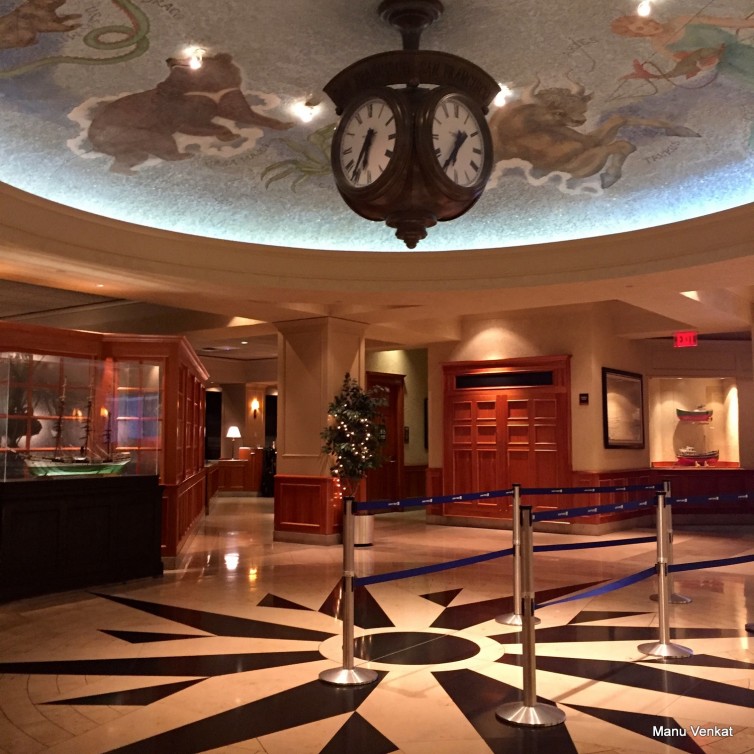
Welcome to United’s lounge at SFO
UNITED P.S. ’“ LOUNGES AT SFO
The Old: The original lounge in Concourse F ’“ near the rotunda ’“ is expansive but decidedly old-school, rocking a wood paneled, vaguely nautical theme.
Food options here, and at other United Clubs, used to be pretty uninspired, with bagels, yogurt, fruit, and other basics.
The New: At SFO, the updated East Concourse at Terminal 3 includes a brand-new United Club, located next to the entrance to Concourse E. Everything about the new lounge feels contemporary, from the sleek bar and glitzy light fixtures to the neatly ordered rows of seats. It is, however, smaller than the original lounge, and doesn’t provide much opportunity for seclusion.
United’s entire set of lounges saw a major food revamp over 2015, adding basic salads and hot soups. It’s still not a full meal in and of itself, but it’s enough to come away more satisfied. Many of the new options ’“ like pita chips and hummus or mixed nuts ’“ were chosen with health in mind.
The Verdict: Food-wise, the new stuff wins, without a doubt. Bon apetit! In terms of the lounge scene at SFO, it’s purely a matter of taste and convenience, since both the old and new lounges are open. Bear in mind that you can also walk to the United Club in International Concourse G, connected to Terminal 3 via a post-security walkway. It’s plenty big, has a reasonably fresh look, and sports a great view of the heavies on the international terminal apron.
UNITED P.S. ’“ AIRCRAFT AND FREQUENCY OF SERVICE
The Old: United’s p.s. route is serviced by the very capable 757-200. Before 2015, every 757 on p.s. duty was outfitted with a remarkably consistent interior hard product. These aircraft offered an expanded business class cabin with 28 lie-flat seats ’“ substantially better than the standard domestic first class product, especially for transcontinental red-eye flights.
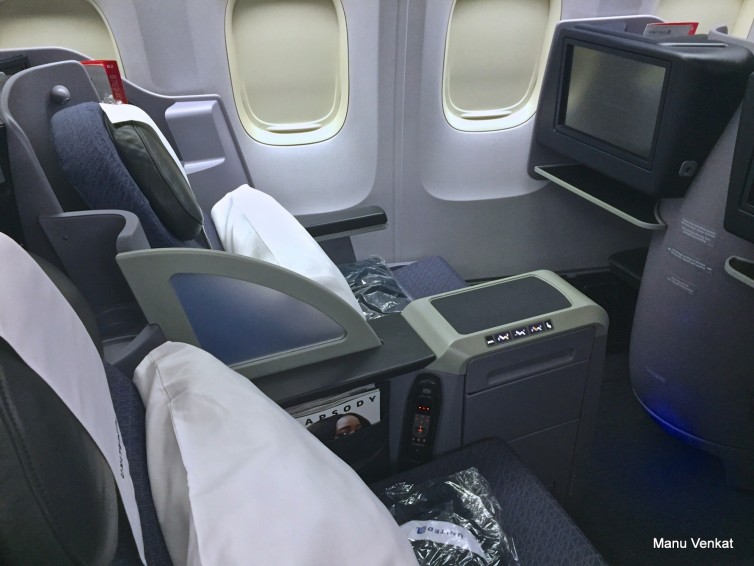
Taken on a 767 that was flying the SFO-EWR route, but the product is the same as on p.s. 757s
The 757s are not new aircraft, but United still had a pretty fresh looking p.s. product in economy. You get sleek-looking seatback entertainment screens with a good interface and large library. Economy Plus earns you a generous 36 inches of seat pitch and the complete package is noticeably better than the standard mainline United fleet.
The New: In June of 2015, United announced that it would be switching its p.s. flights to its Newark hub. The move allowed United to increase the frequency of p.s. flights to 15x daily to Los Angeles and also 17x daily to San Francisco. The problem was that United had to pull some 757s off of non-p.s. routes to make that happen. These international-configured aircraft had a smaller business class section and were noticeably more worn than p.s. aircraft, with smaller seatback entertainment screens in economy and more rattling around on takeoff and landing. The difference is less noticeable if you’re sitting in business, though.
- Old version; a rattling add-on
- New version is much cleaner
The Verdict: The new increase in frequency is a big win, but United needs to work fast to get those international-configured aircraft up to p.s. standard. Until they do, United loses out on what was a big advantage of the old p.s. service: consistency in what you could expect when they walked on board.
The transcontinental market is a fiercely competitive one, with a number of other airlines flying flagship domestic services between New York and SF/LA. Focusing on what I know best, SFO-JFK, the distinguishing factors between the different products are:
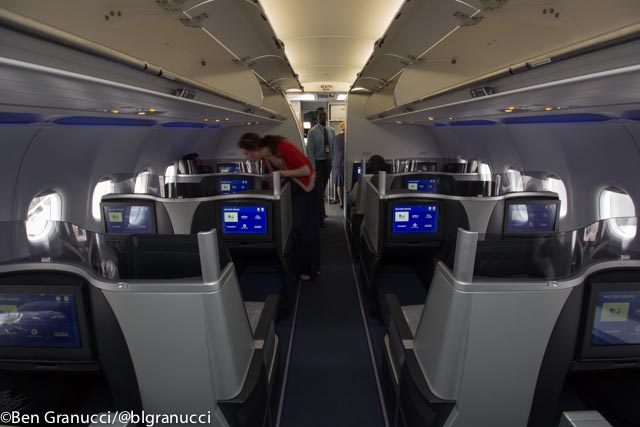
Mint Cabin on jetBlue
’¢ American is the only airline to offer consistent three-class (first/business/economy) transcon service, using their Airbus A321T.
’¢ JetBlue’s Mint service is quite popular and also uses the Airbus A321. Advantages here include four ’œprivate suites’ in business class and 33’ legroom in standard coach.
’¢ Delta flies a mix of aircraft between JFK and SFO, including some wide-bodies, meaning more seat capacity and some business class cabins that have consistent direct aisle access.
’¢ Virgin America offers a predominantly economy class cabin but solid frequency, flying out of both Newark and JFK. It’s a fun airline, especially from a coach-flying millennial perspective.
Anyways, back to United.
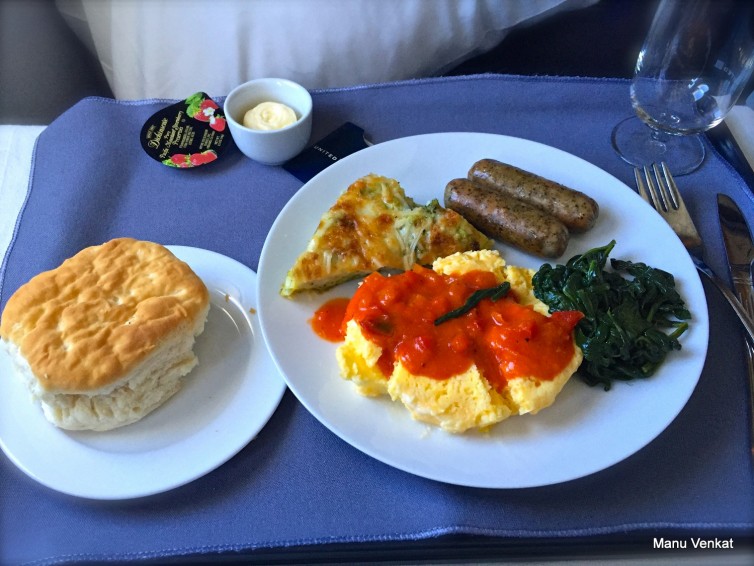
Breakfast!
UNITED P.S. ’“ PREMIUM CABIN INFLIGHT SERVICE
The Old: Service on p.s. flights pre-2015 included a pretty standard pre-departure drink service, hot towel, printed menu, multi-course meal (with an ice cream sundae finale), and pre-arrival snacks. The meal options did not change that often and the food wasn’t best-in-class.
The New: United announced new p.s. menu options following the switchover to EWR, part of a larger premium cabin menu refresh that occurred in late 2015. On a recent morning flight I opted for the Chicago-style skillet with eggs, potato gratin, sausage, and spinach. Overall, I was impressed with the updates.
United has rolled out an Otis-designed bake-on-board cookie service for afternoon and evening p.s. arrivals. A welcome touch.
The Verdict: United’s efforts to improve its premium cabin meal offerings are going well. They are making strides in becoming more competitive in their food options.
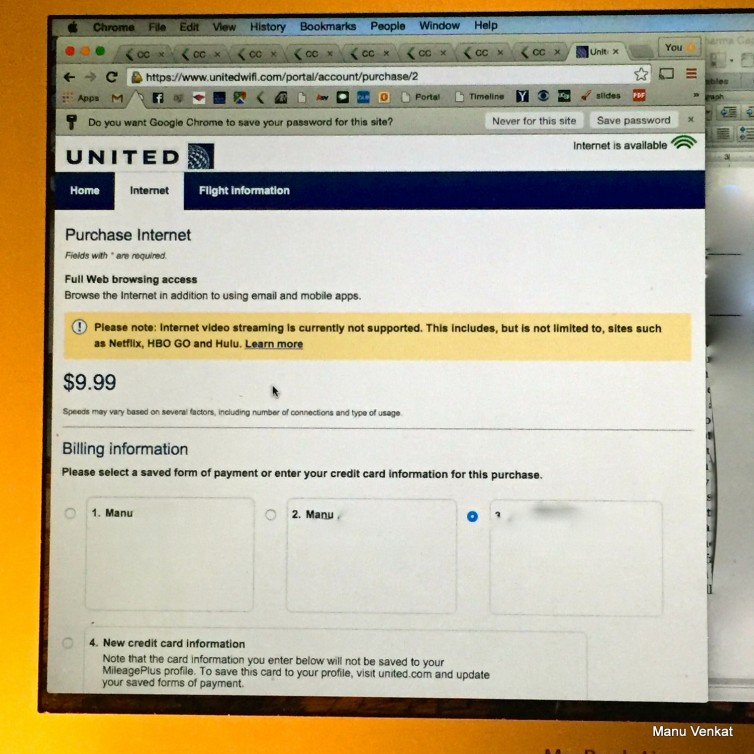
Connecting up to the internet
UNITED P.S. ’“ INFLIGHT CONNECTIVITY AND ENTERTAINMENT
The Old: Sadly, United has lagged its major competitors in offering consistent inflight WiFi across its fleet. The p.s. aircraft had pretty solid entertainment options in all cabins.
The New: United now offers the option to stream an impressive library of movie and TV entertainment directly to your personal device on many of its craft that are enabled with WiFi.
The Verdict: The improvements in WiFi and entertainment are very welcomed, though still not quite up to the level of some other airlines. JetBlue offers free, streaming-quality Fly-Fi, which is hard to beat.
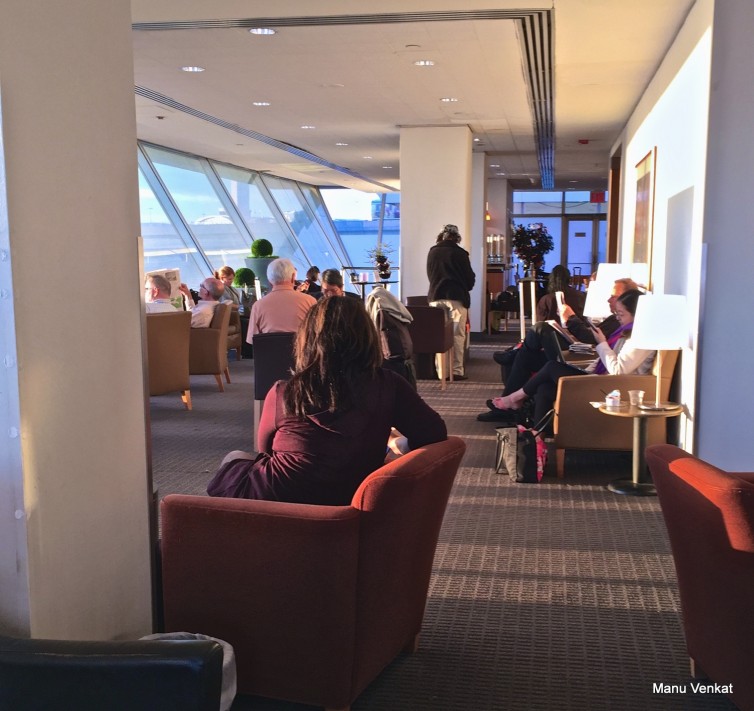
United Club at JFK Terminal 7
UNITED P.S. ’“ COMPARING THE CONCOURSES AT JFK AND NEWARK
The Old: United’s flights out of JFK operated from the modestly sized Terminal 7. Seating in the general concourse could get pretty crowded, and pre-boarding lines would spill across into the concourse corridor. United did have a good lounge one level up from the main concourse level, but it also could get a bit crowded at times.
The New: Since the switchover, flights from SFO and LAX now generally arrive and depart out of the C1 Concourse at Newark, one of three sub-concourses in United’s C Terminal. It’s not the most inspiring concourse, but renovations are ongoing.
On my last p.s. flight to Newark I checked out the massive United Club at the base of the C3 Concourse. The time I went, it was very crowded with relatively little open seating, kids running around, and occasional lines for the food counters. It didn’t feel very exclusive.
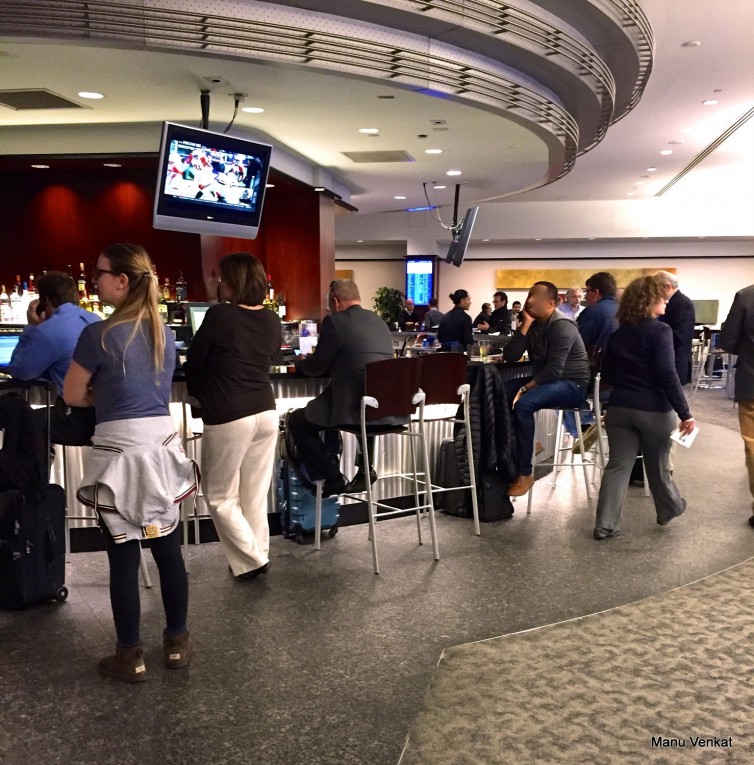
The United Club at Newark
The Verdict: This feels a bit like comparing apples and oranges. United’s JFK operation was pretty small, making it easier to navigate and giving the lounge space a more ’œpremier’ vibe. Newark, by comparison, is a huge hub, handling around 25 million United passengers annually and offering better opportunities for United connections. Those renovations at EWR can’t be done soon enough, though.
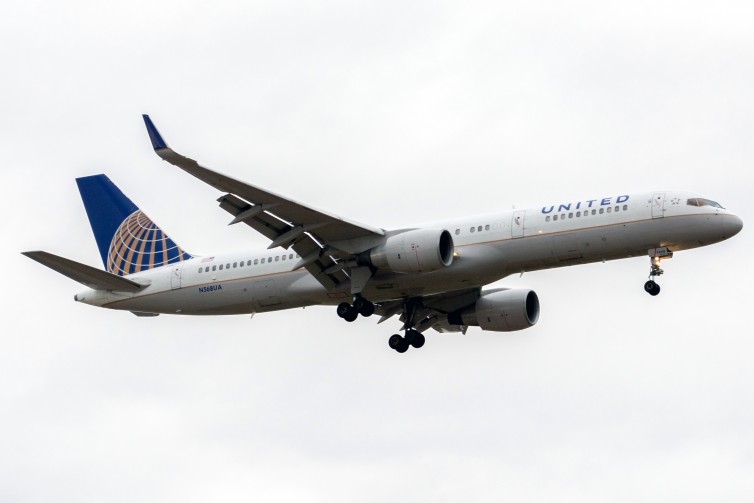
United Boeing 757-200ER N568UA final JFK p.s. arrival – Photo: Jason Rabinowitz
THE FINAL VERDICT ON THE NEW-AND-IMPROVING UNITED
There’s no doubt that things are moving in the right direction. Fueled by new leadership and newfound profitability, the airline’s investments in its fleet, inflight hard products, and service is already making an impact, with more improvements to roll out through 2016.
Of course, there will be cynics out there who say that United had nowhere to go but up. In an era when other airlines are also investing heavily in fleet updates and improvements in service, the real question is not whether United is improving, but whether the improvements will be enough to win over travelers who have become disillusioned with the airline in years past.
Zeroing in on p.s. routes, many flyers bristled at the move of the service to the much-derided Newark, but on the whole I think that the move makes sense. The onus is on United to continue investing in its Newark hub to help it shake its past reputation. The recent increase in seats available for the p.s. routes appears to have had a marked impact on ticket prices, which now sometimes dip below $300 round-trip.
If you’ve had any recent experiences flying the friendly skies with p.s., what do you think of the changes the airline is rolling out? Share your thoughts and experiences in the comments section below.
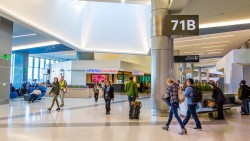
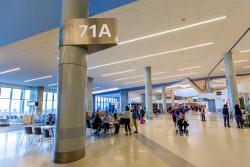
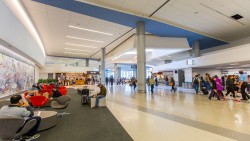
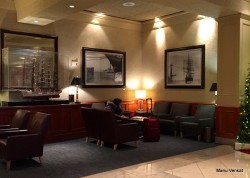
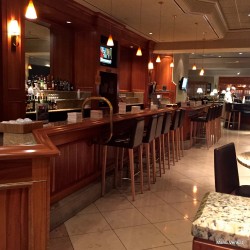
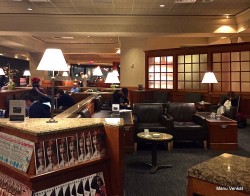
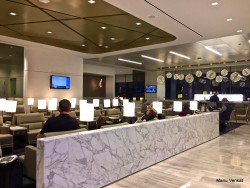
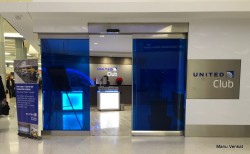
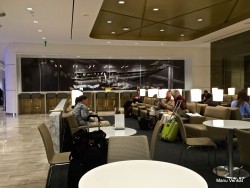
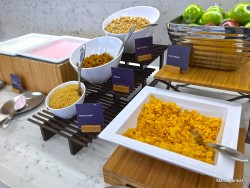
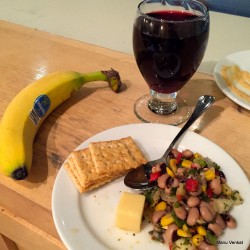
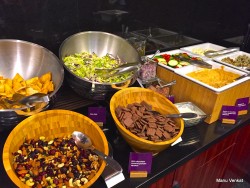
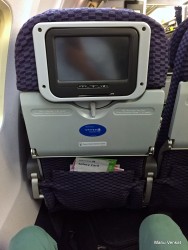
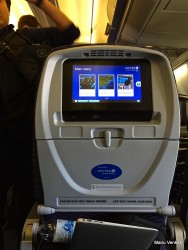
United have problems in general with their east coast hubs. While not as bad as Dulles, EWR still feels like an oversized gulag punishment cell that is completely disjointed. I hope that they can improve that place, I try to avoid it at all costs.
Well last summer, UA made the news for maintenance woes that led to major long-haul flight delays @ EWR. From my last few visits, I can see that there are some major renovations ongoing to improve the terminal environment (http://goo.gl/WFRs9o). On operations, I have my fingers crossed, but we’ll see.
In my opinion, JFK is MUCH MORE convenient than is EWR, especially from 42nd Street area.
Hi Tom – I think most people would agree with you. How are you getting to either airport, though? With no traffic both airports are around 30 minutes from Midtown, and from my experience public transit takes about an hour to either airport. EWR isn’t exactly convenient, but to me it seems that the public perception is worse than the reality.
You made an excellent (and obvious) point to those who know, that convenience getting to either airport is dependent on traffic. Both can be made in equal time with the good and nightmare with the bad.
While I understand the rationale for moving from JFK to EWR, I think United has negatively affected the product and prestige of P.S. Terminal 7 @ JFK (where United PS was based) is a small and quiet terminal – a few BA flights, a couple of Cathay planes….that’s it. This means that I could get from the curb to my plane seat in about 15 minutes, even during busy times. The United Club @ JFK was relatively quiet, secluded and exclusive…not like the zoos they call clubs at Newark. Other amazing aspect of the JFK experience was the United staff. They were friendly, accomodating and professional. Not at all rude or indifferent to customers like their Newark-based colleagues. This experience was fast, convinent and exclusive for the busy business traveller…I loved it!
United says they moved so that that they could offer better connecting service, but in reality, 90% of business travelers are just point to pont between NY & LAX/SFO, and don’t need connecting service. They just want good point to point service. Since P.S. made up 85% of my United travel (1K every year for past 5 years), I will likely be looking for a new airline. Any recommendations?
If you’re looking to stick with JFK, you might check out AA’s A321T service – we wrote about it a few days ago https://www.airlinereporter.com/2016/02/getting-taste-good-life-187-miles/
Thanks!
Blaine Nickeson | AirlineReporter
The JetBlue Mint product is exceptional. Though the frequency does not match that of UA, DL, AA coast to coast – the experience and service far exceeds any of these carriers from my experience and perspective. Beyond that – though hit and miss on service VA can be a good option. Their cabin staff I find to be at best surely – yet, comfortable premium seating and decent food and they are very punctual.
For UA it was probably a tough choice between angering all the JFK fans (which the move did) and flying their premier service out of one airport while growing a hub at another airport in the same city, which is what staying at JFK would have meant. I think you’re spot-on that United’s service at EWR needs improvement, and can see why you’d stick with JFK. I agree with Kyle about having a great experience on JetBlue out of JFK. Plus JetBlue flies direct to secondary West Coast airports like Oakland and – I believe – Long Beach and Burbank. JetBlue’s FlyFi is a total game-changer.
I think you would enjoy DELTA!
I rarely have to subject myself to domestic US air services since I live in Europe. I will never choose a US carrier for my flights to the USA given the inferiority of their hard product, soft product and above all the too-frequent experiences of snarling, offensive, couldn’t-care-less cabin crew. This article reads a bit like a puff piece. The reality is that the American big 3 are inferior operators and their complacency us breathtaking. Please let me know when American carriers start showing consistent respect for their customers.
Points well taken, Jonathan. I failed to mention that this piece was intended as a comparison among US domestic carriers. It wouldn’t be fair either to compare EU carriers with, say, Emirates/Etihaad/Qatar, no?
You missed one key point about the ‘older’ 757s with 16 business seats….
The Economy Plus section on those planes has a massive 37-38″ of pitch, which is outstanding.
I also think saying UA has had a ‘rough decade’ isn’t complete. Try about two, since 1999 onward. Or to be really honest, about 3, since the pilot strike in 1985 that set things off.
True, “rough decade” may have undersold it. Some of the struggles predate my birth.
In E+ the pitch may be an 1 – 1.5″ better with the other 757s, but don’t you think that the sculpted seatbacks in the legacy p.s. aircraft make them seem roomier? Subjective, I guess. My take is that seat pitch as a statistic sometimes doesn’t tell the whole story.
I, like everyone else, was extremely disappointed when UA vacated JFK. I loved the PS flights to LAX.
EWR isn’t great but it is slowly improving. My experiences on UA recently have been very good and I do think quality is on the rise. Meal quality has definitely improved. I sure love flying the 757 and will miss the bird when it is gone.
Agreed on missing the 757, if for no other reason than those old-style squarish windows give you such better views than the tiny ones on the A320/1 family.
I flow with united airlines last year.According to me staff professional and efficient. Admittedly the food was not good, but the house wine and beer were fine. Much better experience than I had anticipated.
Everything is incidental. I was ridiculously loyal to United for ten plus years, but when they changed their frequent flyer program, I switched. There was no mention in this article about the “new” United in regards to their frequent flyer program.
Well, based on my most recent experiences flying SFO-EWR on p.s., United is going backwards, not forward. EWR United Clubs are grossly overcrowded. Several times I was turned away due to overcrowding. Other times, there was a 5-10 minute wait to get into the zoo they call a ‘club’. United, in its infinite wisdom and caring for its passengers, has decided to close one of its 3 clubs (the one in A terminal) so that the crowding can get even worse. My recommendation: go with Jet Blue Mint service. Better in every single possible way.
You missed two of the biggest benefits of transitioning this service to Newark:
1) showers on arrival from a red eye in the “massive” Newark United Club you derided
2) full connectivity of lie flat seats to all European destinations served by United from the west coast via Newark